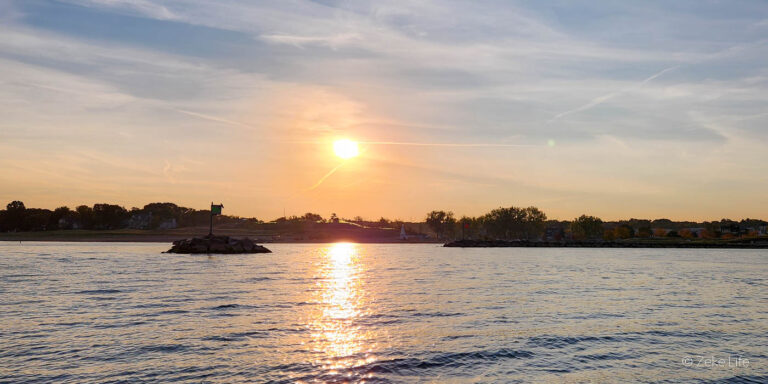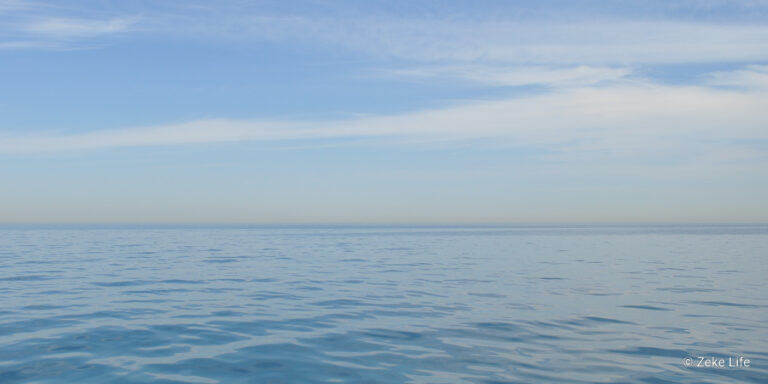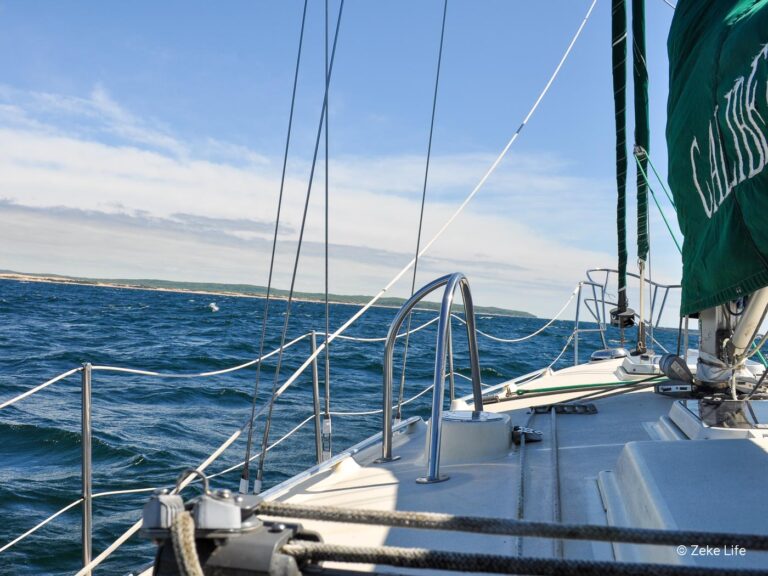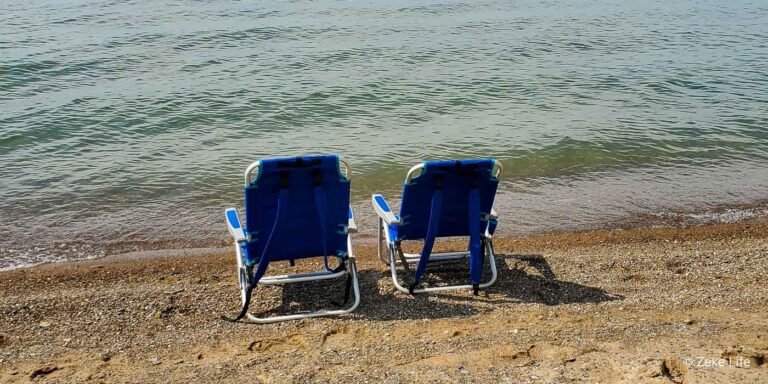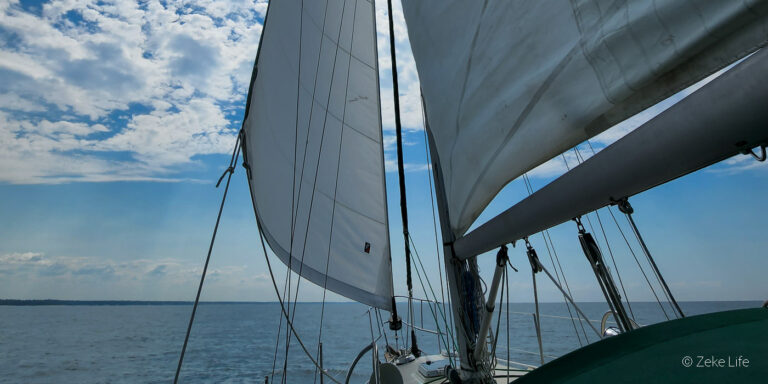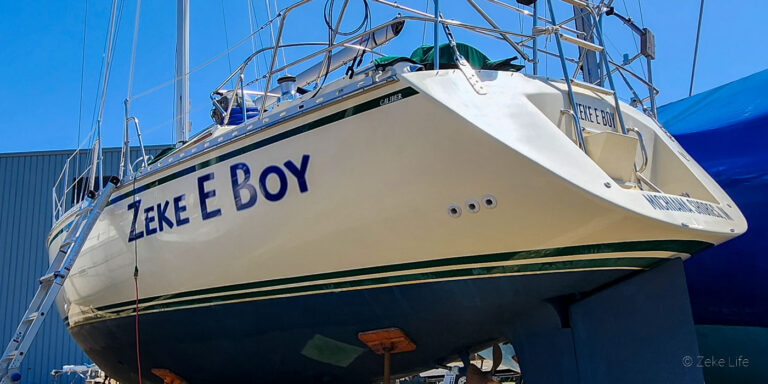This post may contain affiliate links*
Haul ‘er out
As the 2023 sailing season comes to a close, it’s time to winterize the boat for the next 6 months that SV Zeke E Boy will be on the hard – slumbering, hibernating and waiting for the 2024 season. This year, Kara and I decided to haul her out the last week of September even though there is potentially 4 more weeks of ⛵ season left … we’re ready to move on to other things. Here’s our checklist of what we do to winterize our sailboat (it’s more detailed than our process I explained last year).
✅ Fresh Water System
The fresh water system on our boat has two holding tanks totaling nearly 200 gallons of water used primarily for washing in either the kitchen sink or the two bathroom sinks as well as one wash down station on the aft swim platform. I open both tanks up and inspect, looking for growth or dirty water, which the forward tank looks dirtier than the aft, so this is my note to clean that up next spring. I then use a 120v transfer pump with a garden hose out a port window into the lake and pump all the freshwater overboard. It takes some time to empty both tanks. Then I pour in 5 gallons of RV/Marine potable antifreeze in each of the deck fills.
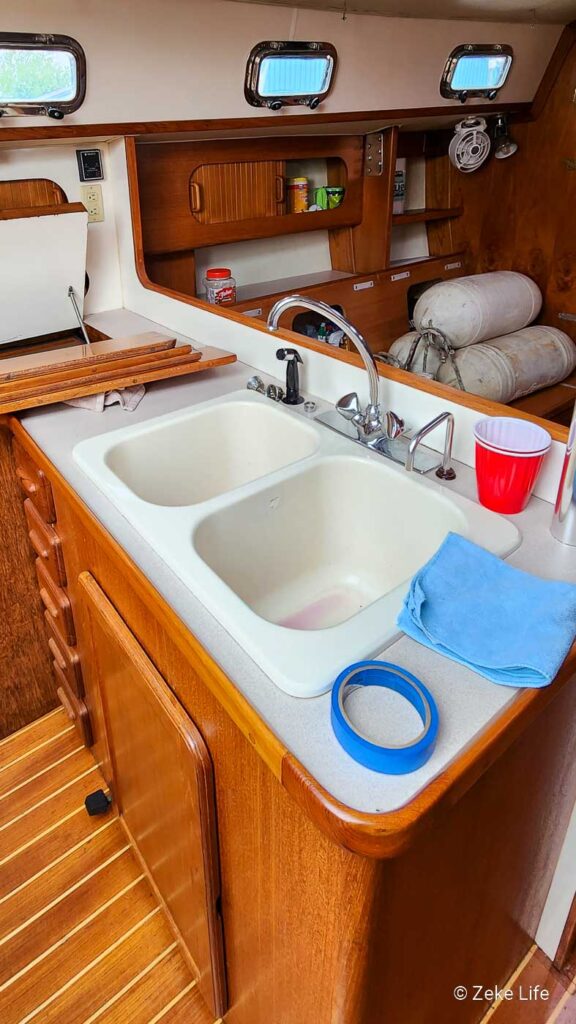
Next step is to run the antifreeze through each and every water line until the antifreeze is thoroughly filled in every water line on the boat attempting to ensure that no water lines burst when the temperatures drop below freezing. Oh, forgot to mention, we have a water heater which does not like to have antifreeze in it. So before any of the items listed above – I drain the water heater and bypass the water lines by removing them from the water heater and coupling them together. Small details like not forgetting to clear the swim platform hose or the kitchen sink spray nozzle would probably lead to a burst and leaky fixture next season. Once complete, the pump is turned off and pressure released by opening up all the facets and then I close up the water tanks for the winter.
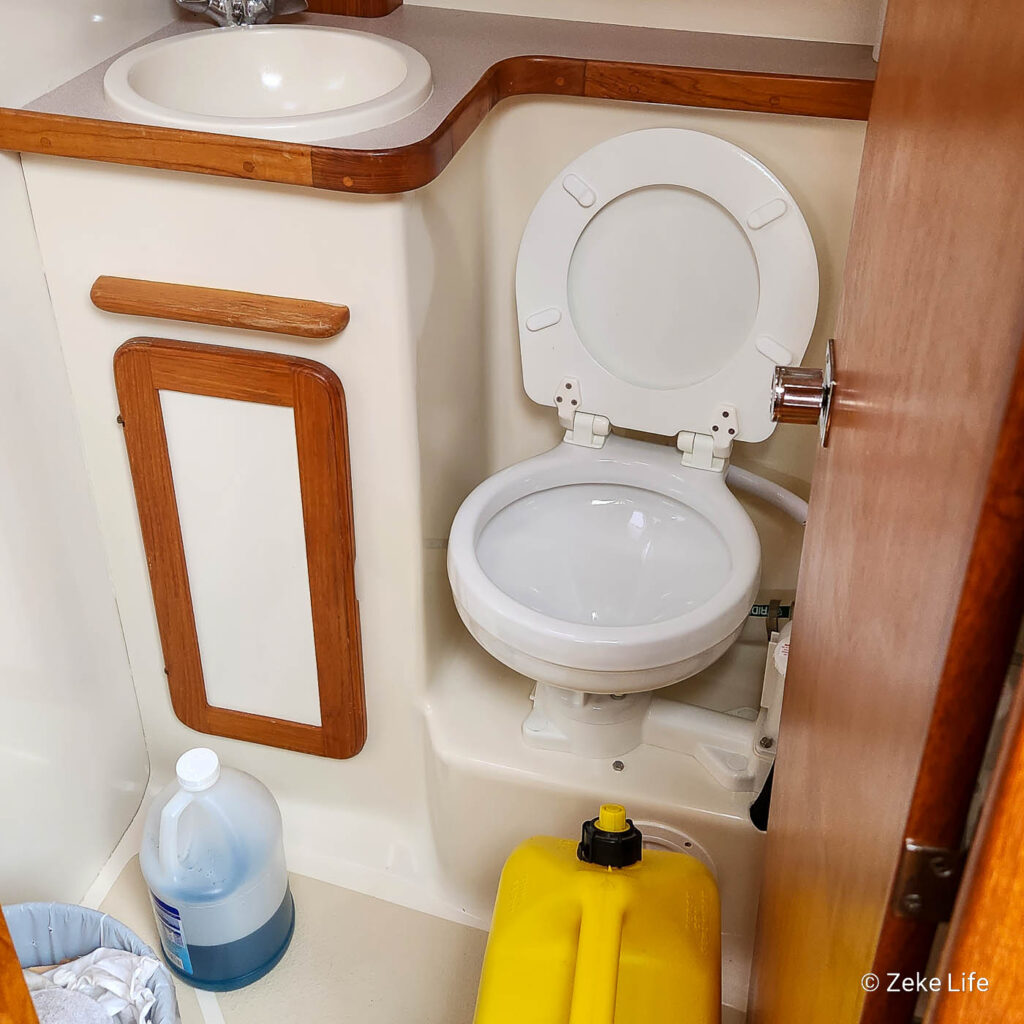
✅ Toilets
I pour 5 gallons of RV/Marine antifreeze in the aft toilet and 2 gallons in the forward toilet and pump it through the waste pipes which then goes into our holding tank. Then we do a last pump out of the holding tank and make sure antifreeze is pumping through attempting to ensure antifreeze is throughout the waste system.
The last task for toilet winterization is tricky. Proper winterization of the toilets per the instruction manual is to pump antifreeze into the toilet from the lake (our toilets pump water into them from the lake and then out to the holding tank). I could only figure to do this once the boat was out of the water and siphon a hose in antifreeze plugged into the through-hull opening under the boat, at the same time Kara has to pump the toilet pulling the antifreeze through the system. This was a messy task that initially I had Kara on the siphon duty and me pumping, we switched that up on the second one. Lastly, since our anchor locker washdown pump pulls from the same port, we had to run that briefly to pull antifreeze through the pump.
✅ Air conditioner
Our air conditioner pulls water from the lake through a heat exchanger and then back out to the lake. If water is left in it and froze inside, the heat exchanger would crack and burst – not good. So I do a similar process of siphoning antifreeze from a jug on the deck and into the exit of the AC port and it flows backwards through the system and out the bottom of the boat.
✅ Fuel system
We fill up the fuel tank 1 (tank 2 is empty right now) and add in a biocide and fuel stabilizer.
✅ Bilge
I pour antifreeze down each of the two shower drains until it reaches the bilge and then fill the bilge with about ½ gallon of antifreeze and pump it out to the normal bilge level.
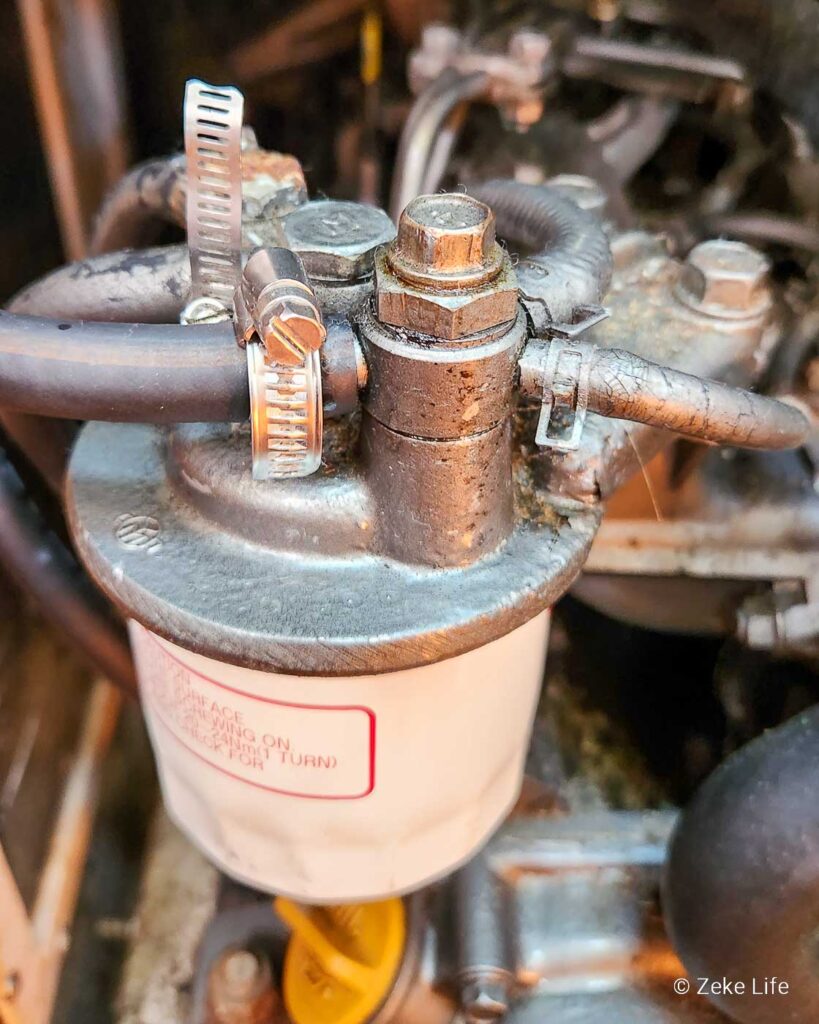
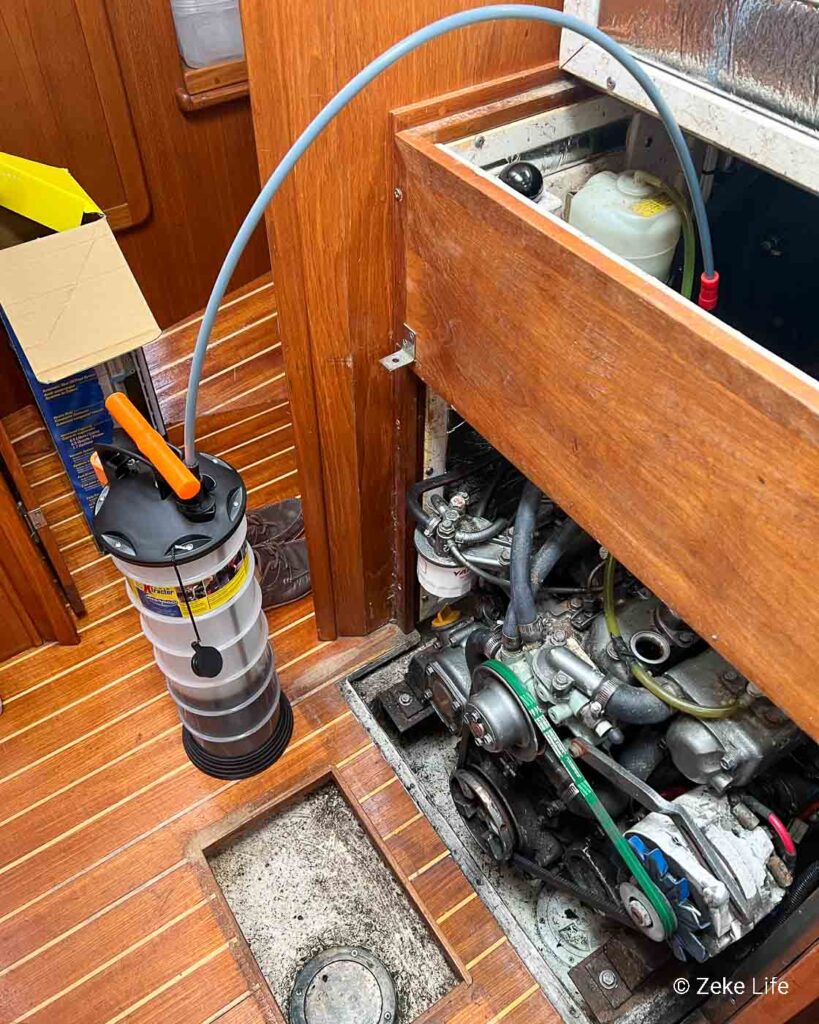
✅ Engine
This year I did a fluid change on both the transmission and the engine coolant/antifreeze about a month before the season ended. The last thing done on the engine is to change the oil and oil filter so fresh clean oil is in the engine over the next six months. To do this we warm up the engine and then I pump the oil out of the dipstick and swap out the filter and refill with fresh oil and dispose of it at a local auto shop.
The last item on the engine is to run antifreeze through the fresh water cooling circuit. I have not been able to do this on my own. We hired the winter storage marina to do this. The process is once the boat is out of the water they have an “ear muff” that is manually pressed to cover the raw water intake and then they start the engine on land and it pulls antifreeze from what looks like a horse trough and through the engine and out the exhaust. The whole process takes just a few minutes but is an absolutely critical task to maintain the engine over the winter.
✅Propane
I disconnect the propane tanks, and bring them home to fill up in the spring.
✅ Batteries
Once everything is done on the plumbing systems and the boat is out of the water, I pull the batteries off and bring them home to keep from freezing. While some folks claim the batteries will be fine sitting out uncharged, I keep them charged up over the winter. We have 6 batteries and replacing them is several thousand dollars, so I will do the work to hopefully extend their life.
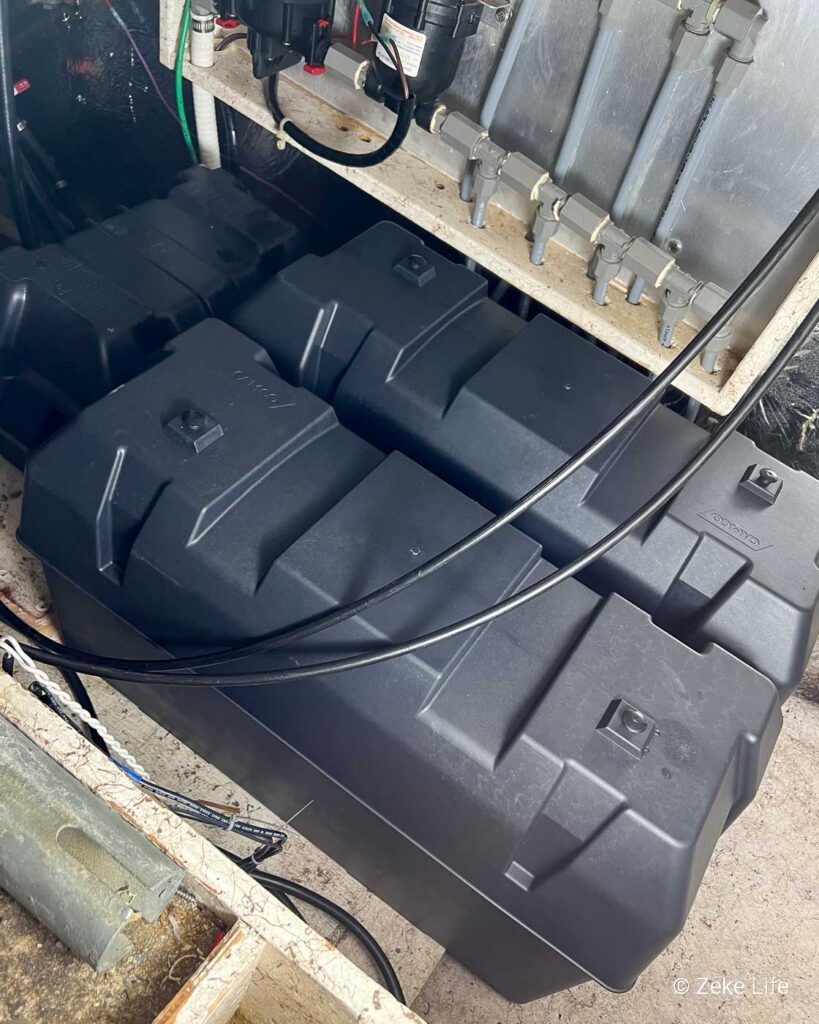
✅ Everything else?
Ok, so that is it?!? Ha! Of course not, what I went through is just the mechanical systems prepared for winter.
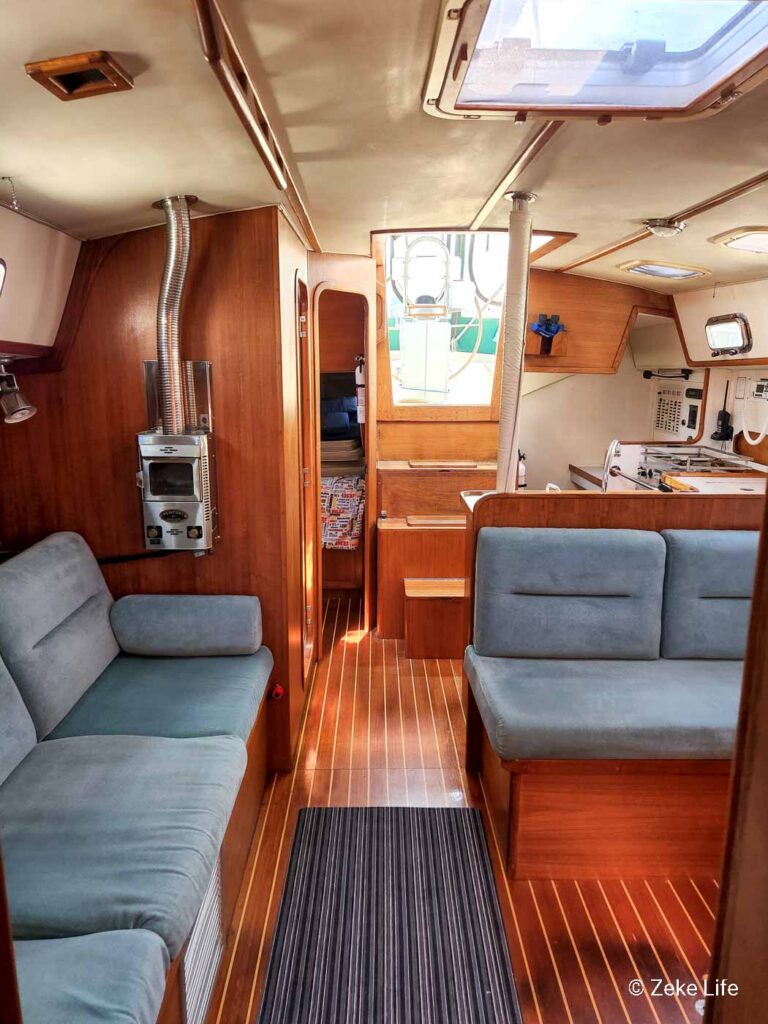
Kara focuses on the rest of the winterization work which is just as much effort in taking all the gear off the boat. We don’t leave things to mold on the boat all winter. So items like clothing, jackets, shoes, bedding, cushions all come off the boat, and are cleaned before being stored for the winter. She brings home all the kitchen items for a good wash and prep for next year. And finally all the exterior canvas comes off. She works hard on these items, but I was too busy doing the previous checklist items to watch or know her process but I appreciate her partnership in cleaning up the boat.
The biggest benefit to clean up is not having a smelly, moldy boat or our things getting ruined over the winter.
✅ Shrink Wrap
After everything is off the boat, the final step and probably the hardest step is shrink wrap. First, I build a wood / pvc structure to protect the standing rigging. Then I prep for the shrink wrap which includes making a belly-band for the bottom of the shrink wrap to stay and measuring around the forestays. This usually takes a ½ day to put together.
Wrapping the entire boat in shrink wrap and using a huge propane torch to shrink the plastic tightly around the boat takes a long day to complete, and I’ve learned that it must be a dry, very calm day. This process prevents any water/snow from accumulating and freezing on the boat all winter. It also makes the boat very convenient to work on inside if there are any projects.
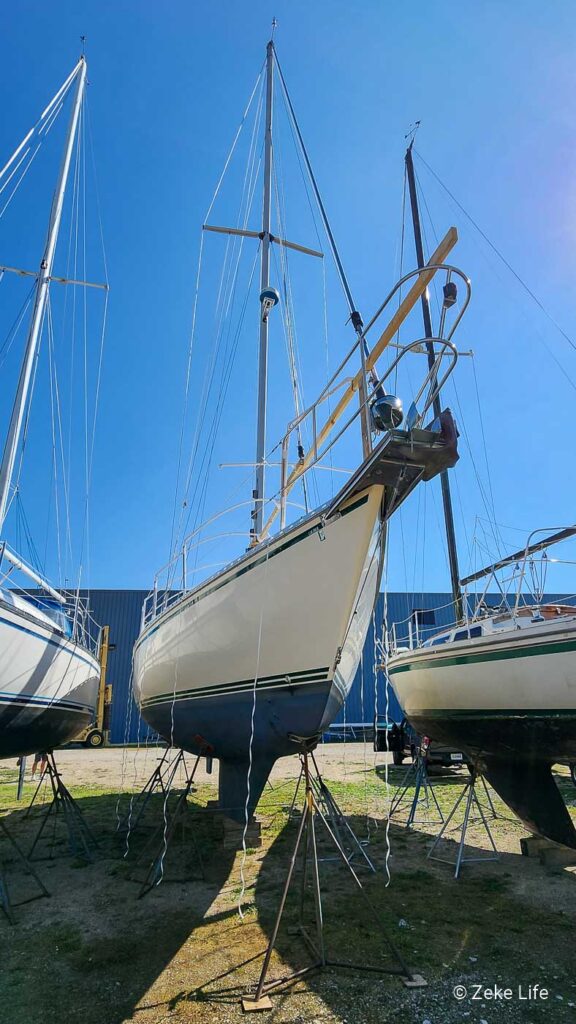
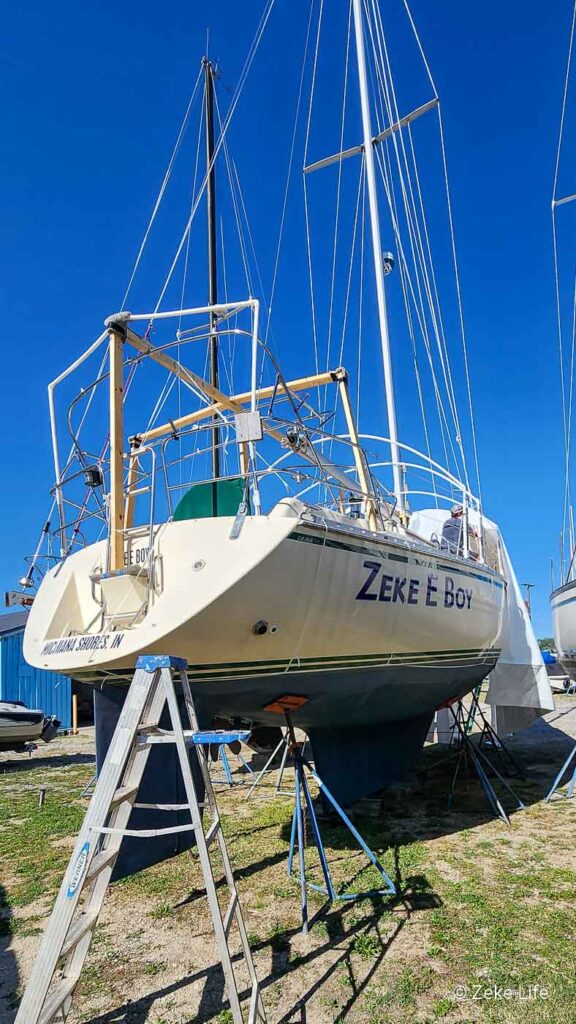
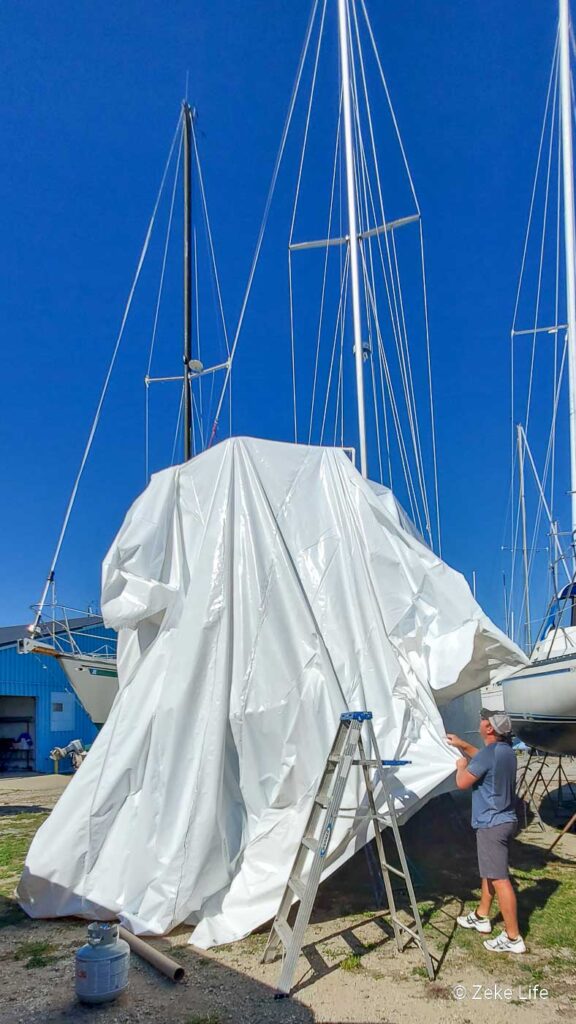
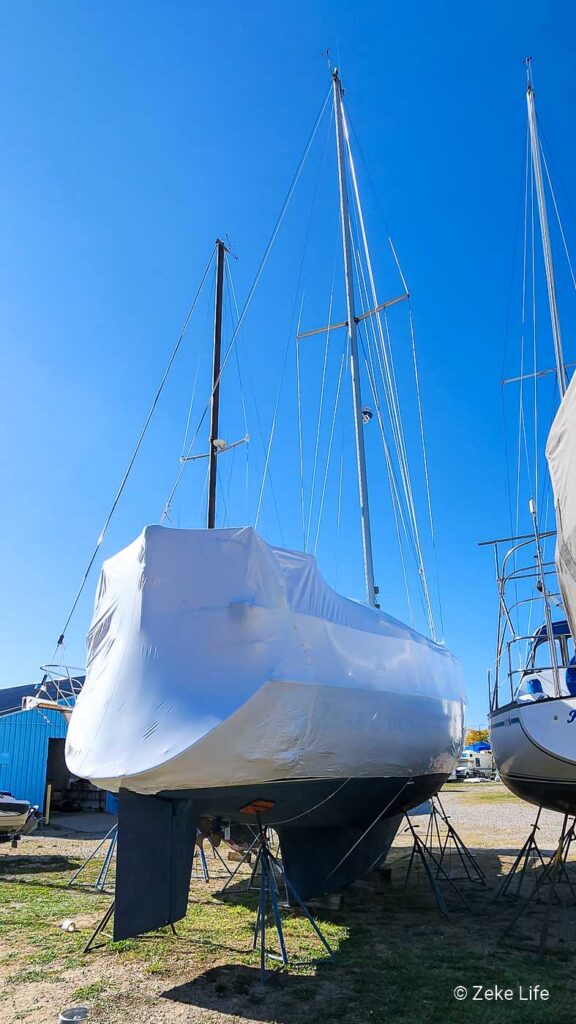
The whole process took a little over a week! Now that is it, and we wait for spring. Well, Kara and I don’t get bored – there is plenty for us to do while we enjoy the rest of fall and winter seasons, and SV Zeke E Boy safely waits for next spring!
Tell us what you think
What do you think of our winterization checklist? Do you have any other recommendations? Please share your feedback in the comments below – I’d love to learn from you!
– Kyle from Zeke Life
Live like Zeke
You’re such a good boy!


